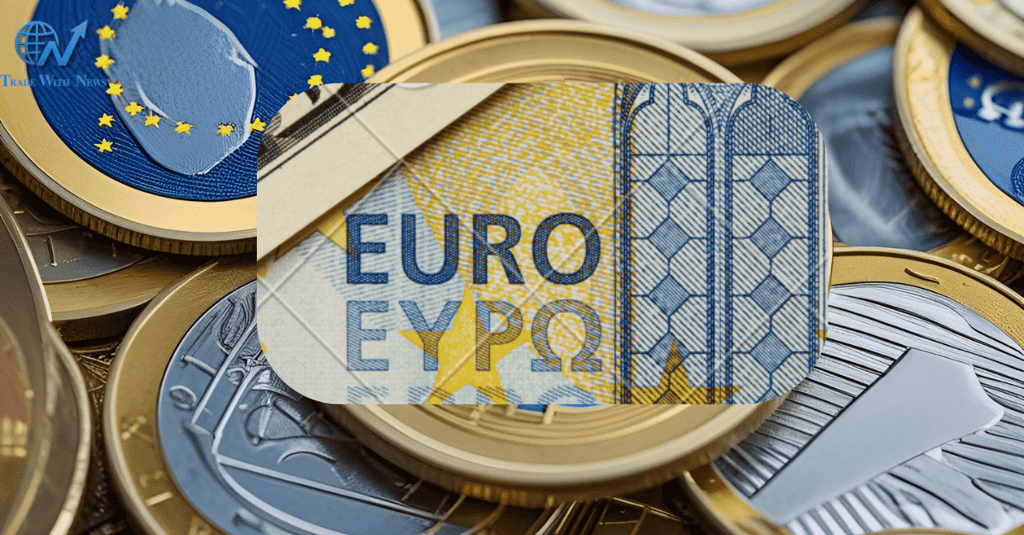EUR/USD Drops Sharply After US-EU Trade Deal; Can 1.15 Hold the Line?
EUR/USD falls as US-EU trade deal strengthens the dollar. Is 1.15 the next critical level? Full breakdown of what’s driving the move and what’s next for the euro.
FOREX
Ayushi
7/29/2025


The EUR/USD currency pair is back in the limelight—this time due to some surprising news regarding transatlantic commerce. A new trade agreement between the U.S. and EU has propelled the U.S. dollar up, dropping the euro down towards that very crucial 1.15 support level.
This sudden turn was unexpected to most traders, particularly following the euro having traded sideways at 1.17 some days ago. With the dollar regaining its strength and central bank meetings looming, the euro-dollar currency pair is at a critical technical and psychological juncture.
In this article, we will be addressing:
Why the US-EU trade deal sparked this action
What the 1.15 support level means
Technically and fundamentally involved forces
What investors and traders need to watch next
And what about the EUR/USD decline?
✅ 1. US-EU Trade Deal Boosts Dollar Hopes
The recently signed U.S.-European Union accord was aimed at reducing industrial tariffs and increasing technological and agricultural cooperation. Although it can seem to be euro-positive on the surface, the markets saw it as a victory for the U.S. economy, which is already dominating Europe in most sectors.
Key takeaways:
Reduce tariffs on US imports into the EU
EU pledge to buy additional U.S. farm and tech products
Artificial intelligence, cybersecurity, and clean energy collaboration.
This helped the U.S. dollar to become stronger, as investors are seeking improved U.S. exports, improved trade balance, and consistent economic strength.
✅ 2. Divergence of Interest Rate
The Federal Reserve is very hawkish since inflation just won't relent in the U.S., while the European Central Bank (ECB) is holding back as growth in the eurozone is slowing. The difference in tone between the central banks is expanding the spread between U.S. and European yields.
You usually get a stronger U.S. dollar when:
The Fed maintains rates higher for longer
ECB turns dovish or halts rate hikes
Economic figures favor America over Europe
This policy disparity is responsible for the weakening of EUR/USD.
Why 1.15 Is an Important Support Level
1.15 is not an estimate. It has been traditionally utilized as:
A solid spot for support when the market dips.
A psychological level watched by institutional traders
A turning point during a series of watershed world events in recent history
If the euro falls below 1.15:
Tech-savvy bears might jump into the market big time.
Stop-loss triggers can speed up the fall
Subsequently, next key support would be at 1.13–1.12 based on prior Fibonacci retracement levels
If 1.15 holds:
We could see a consolidation pop to 1.17 or even 1.18
Market attention might turn to future ECB/Fed decisions
The two may return to a short-term sideways range
Fundamental Analysis: What Else Is Weighing on the Euro?
⚠️Slowing Eurozone Economy
Recent German, French, and Italian statistics show symptoms of economic fatigue:
Low factory PMI
Low consumer confidence
Sluggish retail sales and exports.
Eurozone growth forecasts have been reduced by a number of institutions. That weakens the case for further ECB rate hikes, topping euro support.
⚠️ Inflation Fears Remain Subdued
Though eurozone inflation has moderated from 2024 highs, core inflation is still sticky. But unlike in the U.S., the ECB is currently focusing on growth over inflation risk. That divergence is behind additional dollar support.
⚠️ Political Risks
Continuing tensions in the EU—Italy's budget tensions to France's surging far-right—create uncertainty. Political risk tends to trigger flight to the U.S., where assets are seen as safer.
EUR/USD Breakdown: Technical Analysis
Recent Price Action:
High: ~1.1870
Current: ~1.1535
Blimey, virtually 3% in two weeks!
Important Technical Levels:
Support: 1.1500 (major), followed by 1.1370
Resistance: 1.1650, 1.1730
Moving Averages:
50-day MA: 1.1655
200-day MA: 1.1440
RSI & MACD Indicators:
RSI: Approaching oversold levels (below 35)
MACD: Bearish crossover below the signal line, validating downtrend
The technical setup suggests that unless 1.15 is well supported by volume, the euro can test lower levels in the near future.
What's Next to Watch
Central Bank Commentary
If the Fed is hawkish, it would drive EUR/USD under 1.15.
A dovish surprise move by the ECB would be pressuring
Both the central banks have meetings lined up in the weeks ahead
Future Economic Events
Eurozone inflation and GDP data
U.S. employment report (NFP)
PMI and trade data of both economies.
Market Sentiment Indicators
COT (Commitment of Traders) euro futures reports
Dollar Index (DXY) trends
Volatility indicators, like VIX and those FX options skews.
So, what's the catch for traders?
For Short-Term Traders:
Look for confirmation of a bounce or break at 1.15
Implement tight stop-losses because of anticipated volatility
Closely watch Fed/ECB news flow for quick-moving opportunities
For Long-Term Investors:
Wait for macro validation before taking EUR/USD exposure
Consider hedging euro positions if 1.15 breaks hard
Monitor German bunds versus U.S. Treasuries' bond yield spreads
The long-term outlook for EUR/USD.
Bullish Case:
Fed goes dovish, dollar falls
Eurozone surprises to the upside
1.15 is holding steady, which means we're slowly working our way back to 1.18–1.20.
Bearish Case:
Fed stays hawkish, or ECB goes dovish
Eurozone recession fears deepen
If below 1.15, it will soon slide down to 1.12 or even lower.
Most analysts are bearish-to-neutral presently, anticipating EUR/USD to remain range-trapped between 1.12 and 1.17 for the remainder of 2025 in absence of a sudden policy or economic change.
Conclusion
The EUR/USD currency pair just took a serious blow after the US-EU trade deal, thanks to a strong dollar and optimism among investors about the U.S. economy. The next few days and weeks are gonna be extremely important, with the 1.15 level being a crucial level where bulls and bears are gonna be at loggerheads. Whether an investor or a long-term trader, this is the time to be paying attention. With central bank announcements and releases of economic data on the horizon, euro-dollar pair volatility has only just begun. Be up to date, monitor your exposure, and watch the 1.15 line—what happens from here could set the second half of the year for forex markets.
About Company


